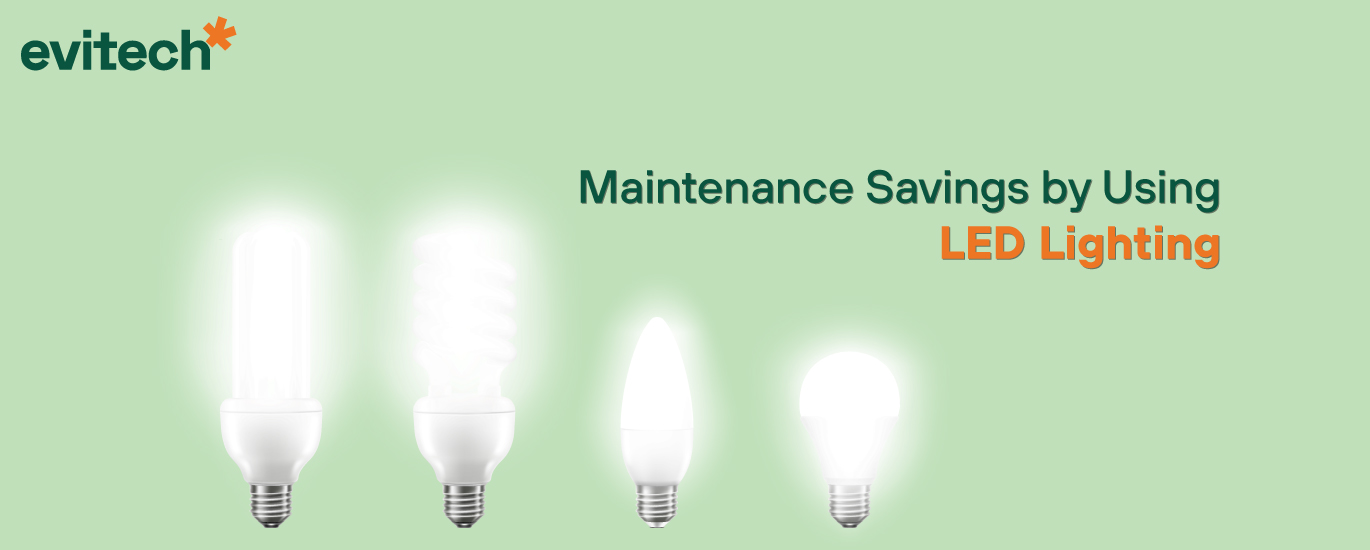Maintenance Savings by Using LED Lighting
LED products are regularly promoted based on energy savings. However, they are also characterized by long useful life and resistance, offering significant maintenance savings.
LED lamps can be made entirely of impact-resistant materials. This is not the case with incandescent, fluorescent and HID bulbs, all of which use fragile glass bulbs. It’s worth mentioning that some decorative LED bulbs use glass to replicate the look of incandescents.
This makes the bulb physically more fragile, although a long service life is
always obtained.
LED products are characterized by their long life and can be made resistant to impact.
Long Useful Life
An LED lamp lasts much longer than other types of lamps. An incandescent bulb, for example, offers approximately 1,000 hours of use, and a fluorescent one can exceed 10,000. However, equivalent LED bulbs provide up to 25,000 hours; that is, they have a useful life equivalent to 25 incandescent bulbs or 2-3 fluorescent ones, which is much cheaper.
Fluorescent tubes, normally used for office lighting, should also be mentioned. They boast nearly 20,000 hours, but they can be replaced with LED versions that last over 50,000 hours.
A more extreme example is HID bulbs used for outdoor and industrial lighting, which last about 10,000 hours but lose more than 30% of their brightness in the first 5,000. Equivalent LED bulbs provide a lifespan between 50,000 and 100,000 hours.
Although LED products have higher prices, they offer great maintenance savings thanks to their long lifespan. This includes less bulb replacement and corresponding savings in labor.
LED Spotlights with Frequent On and Off
Most fluorescent and HID lamps experience a drastic reduction in lifespan by frequently switching on and off. In particular, HID luminaires also need a time of 2-10 min to reactivate, which is especially problematic in industrial or outdoor sites.
LED products can be turned on and off frequently without affecting their long lifespan, making them highly compatible with occupancy sensors, time controls, and other automation measures.
Since LED lighting tolerates frequent switching on and off, it is suitable for combination with automatic controls.
Vibration Resistance
Incandescent, fluorescent, and HID lamps have filaments and electrodes prone to damage from frequent vibrations, which is a problem for lamps near heavy machinery.
LED lighting is a solid-state technology that resists vibration. In addition to offering maintenance savings, its resistance makes installations safer. For example, there is less chance of a lamp failing during a critical activity.
In conclusion, LED lighting systems are more durable and resistant than other options, which translates into significant savings. Its resistance also provides greater security in places where light is heavily relied on, such as outdoor spaces at night.
Latest Post
- Why do LED Spotlights Burn?
- What is the electricity consumption of LED Christmas lights?
- What are LED lighting towers, and What are their Applications?
- Using Natural Light in LED Lighting Designs
- Use of LED Lights in Domestic Houses
- Three Ways to Apply LED Light in Buildings
- Savings in Air Conditioning with LED Lighting
- Replacement of Halogen Spotlights by LED
- Recommendations when Buying LED Lights for Cars
- LED Lighting Connected to the Internet: A Promising Technology


